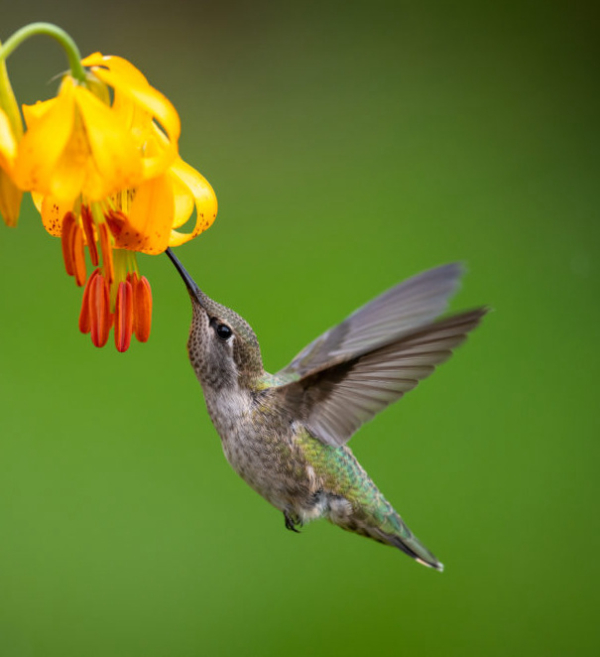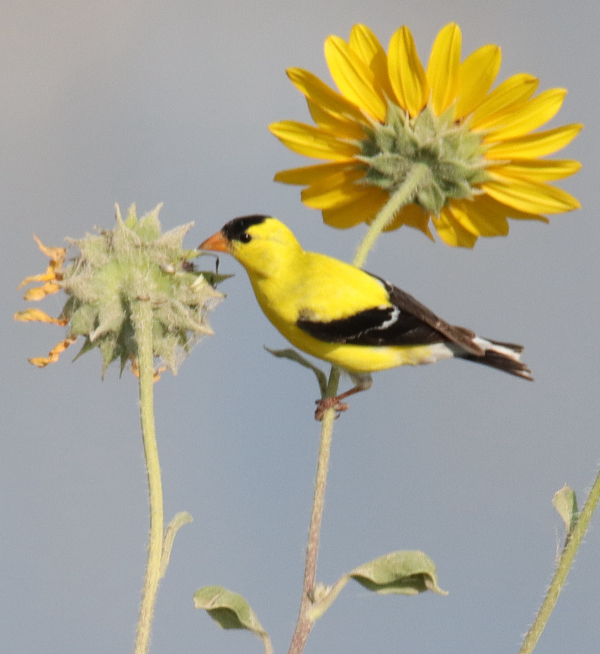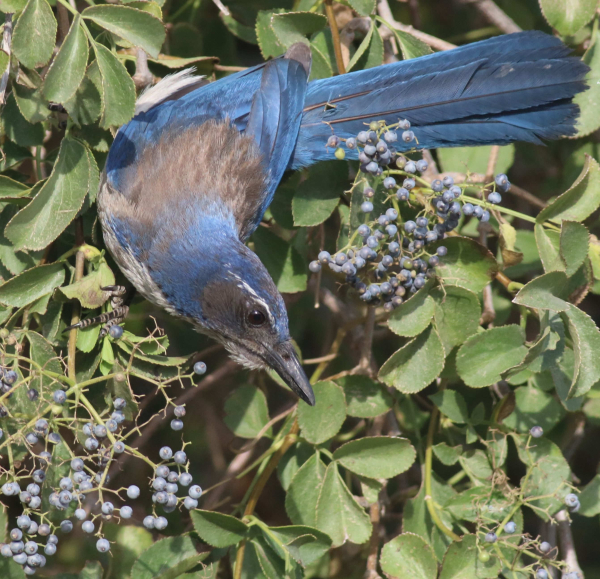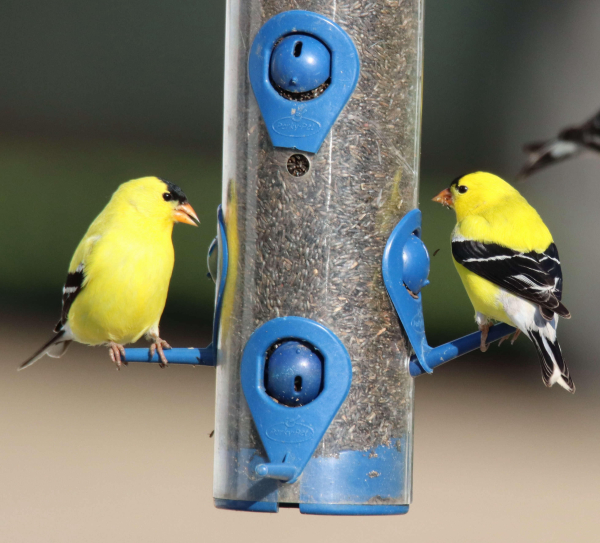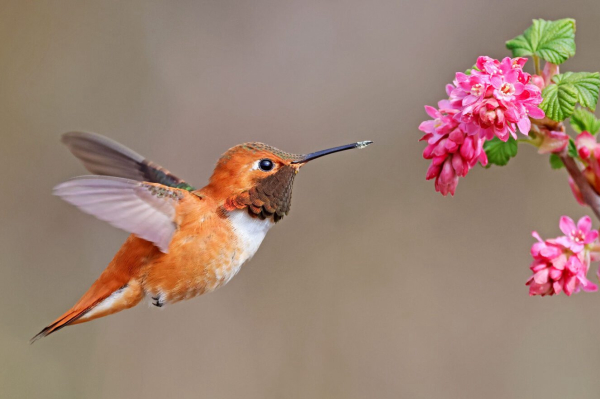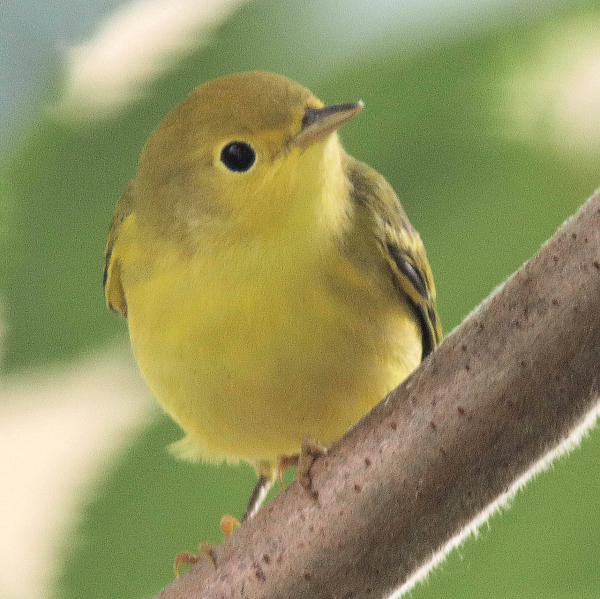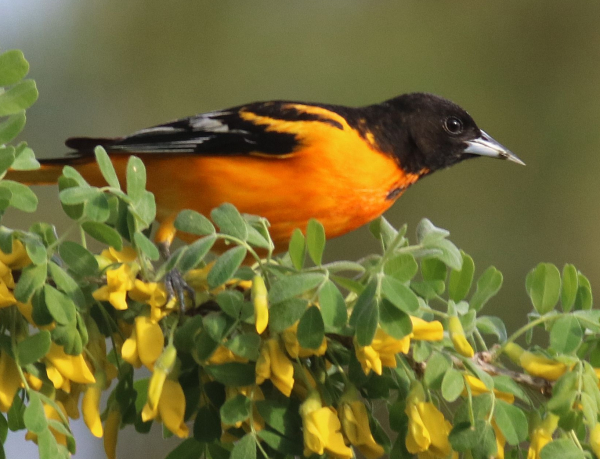Making a Birdscape More Appealing
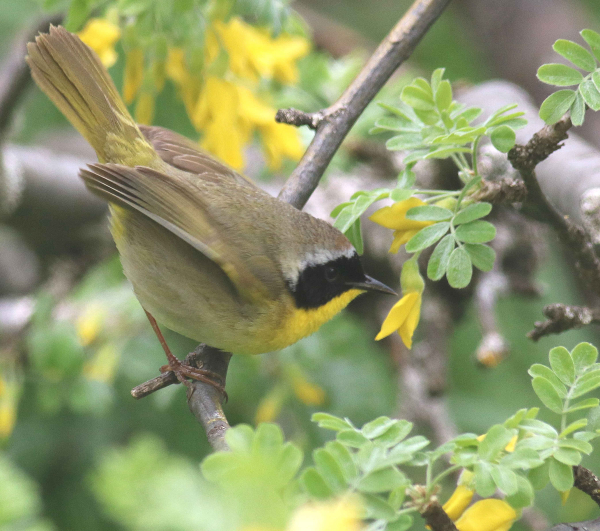
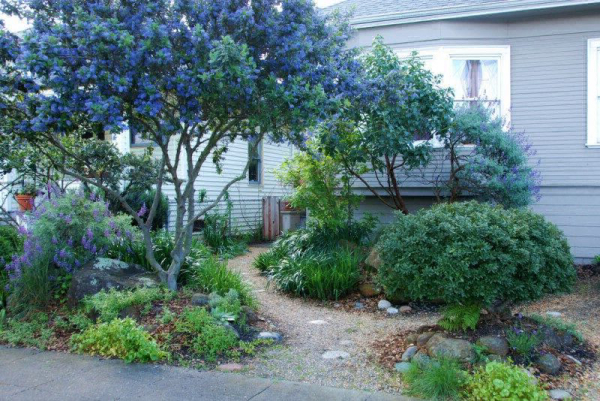
During this green time of the year, our yard can get a bit overgrown with fast-growing flowering plants, grasses, tree branches, and bushes taking over some areas. Things were getting a bit out of control, which isn’t a bad thing for a birdscape, but we like to keep a level of manicuring to avoid an overgrown look. Yesterday we did some pruning, trimming, and weeding, along with some planting after having mowed the 2 open areas of our yard a couple days before. We are thankful that to have a mature landscaping base in our yard, and now, at the height of the green season, it’s rewarding to see how our annual plantings and other improvements have provided a pleasing home for us, and a haven for birds.
Afterwards, while we sat on the deck overlooking our backyard landscaping, it felt very comfortable with flowing plants melding with varied levels of greenscaping, as we appreciated the birdsongs and sightings that ebbed and flowed through our yard and overhead. That’s when we remembered an article provided some years ago in the Cornell Lab’s excellent website – All About Birds – which prompted us to review it this morning. It provides “tips to make a ‘messy’ wildlife garden look good,” and we thought it would be helpful to review a few points here, then refer you to the original article below.
The article points out that native gardening and landscaping for birds has something of a reputation for not being tidy, but their tips are excellent examples of how we can help to take some of the “messy” edge off our landscaping that some people might consider overgrown. One thing we do is to keep the lawn-covered areas mowed regularly, and keep the boulevard well-manicured in front of the house, as well as along the sidewalk and entry to our front steps. That practice jells well with the All About Birds (AAB) article, which suggests “mow the edges” to remove any impression of a messy area.
Some birds benefit from open areas of lawn, like robins, mockingbirds, native sparrows, thrashers, and others. But our lawn probably only covers 40 percent of our yard these days as we add new garden areas and larger plants each year. But we like to allow some of our “lawn” to grow to maturity and head out, which creates a nice edge treatment in our backyard, and there is something soothing about seeing the mature grasses blow with the wind.
An excellent tip from the AAB article, is to “err on the side of flowers.” That’s right, who can complain about too many flowers, or messy flowers? Especially along open areas where passing people can see your yard, bunches of flowering plants positioned here and there along the edges adds a lot, especially if you use showy native flowers, like black-eyed Susans, coneflowers, small sunflowers, poppies, and others. Hummingbird flowers and flowering vines create focal areas in your yard. In some areas, a surprise splash of color can make a big impression, and a full on flower garden provides a beautiful focal point and hummingbird magnet.
We like to avoid straight lines, squares and rectangles in our gardening and landscaping endeavors, preferring curving edges, oval or circular flower gardens and decorative grass areas that break up other plants. We emphasize high, medium, and low levels of plants, which is a matter of weaving flowering plants, bushes, trees, and vines in pleasing combinations with shorter plants in the foreground and taller plants on the sides and back – and in the middle if you like. Areas of sun and shade are important for birds, and keep in mind that the plants you choose will also have different tolerances to sun and shade, hot and cool, wet and dry.
Mix in some birding elements too – a decorative birdbath and an attractive birdhouse can break up any overgrown impressions and help designate the area as a bird-friendly location. We have 3 bird baths positioned in prominent locations in our yard; they are both decorative and they serve important purposes for birds. We do the same with decorative hummingbird feeders, which also make a great statement that indicates you have a birdscaped yard. An arbor or archway can add a bit of elegance to a landscaped yard, and we even have one area where tall sumacs line both sides of a walkway that form a natural arbor of leaved branches – natural with the aid of some pruning that is.
Pruning can be your best effort to devote a little more time toward, and by simply pruning a couple bushes that emphasize a well-maintained look, it shows neighbors and passersby that you are conscientiously caring for your yard, with an eye toward design, although maybe in a little different way than they do. More important, you may inspire some people to add a bit of birdscaping to their yard, as well as a bird bath or decorative feeder.
In short, birdscaping doesn’t need to purvey an overgrown look as long as it provides some basic opportunities for birds to forage, rest, get some shade, get a drink, have a place to escape to, even a place to nest. If your yard provides some of these options during the green season, as well as other seasons of the year, you are surely an exemplary birder. Enjoy your yard and the birds around you throughout the summer!
You can refer to the All About Birds article for more information and illustrations at
Tips to Make a “Messy” Wildlife Garden Look Good | All About Birds All About Birds
Share your backyard birding experiences and photos with The Birding Wire at editorstbw2@gmail.com

